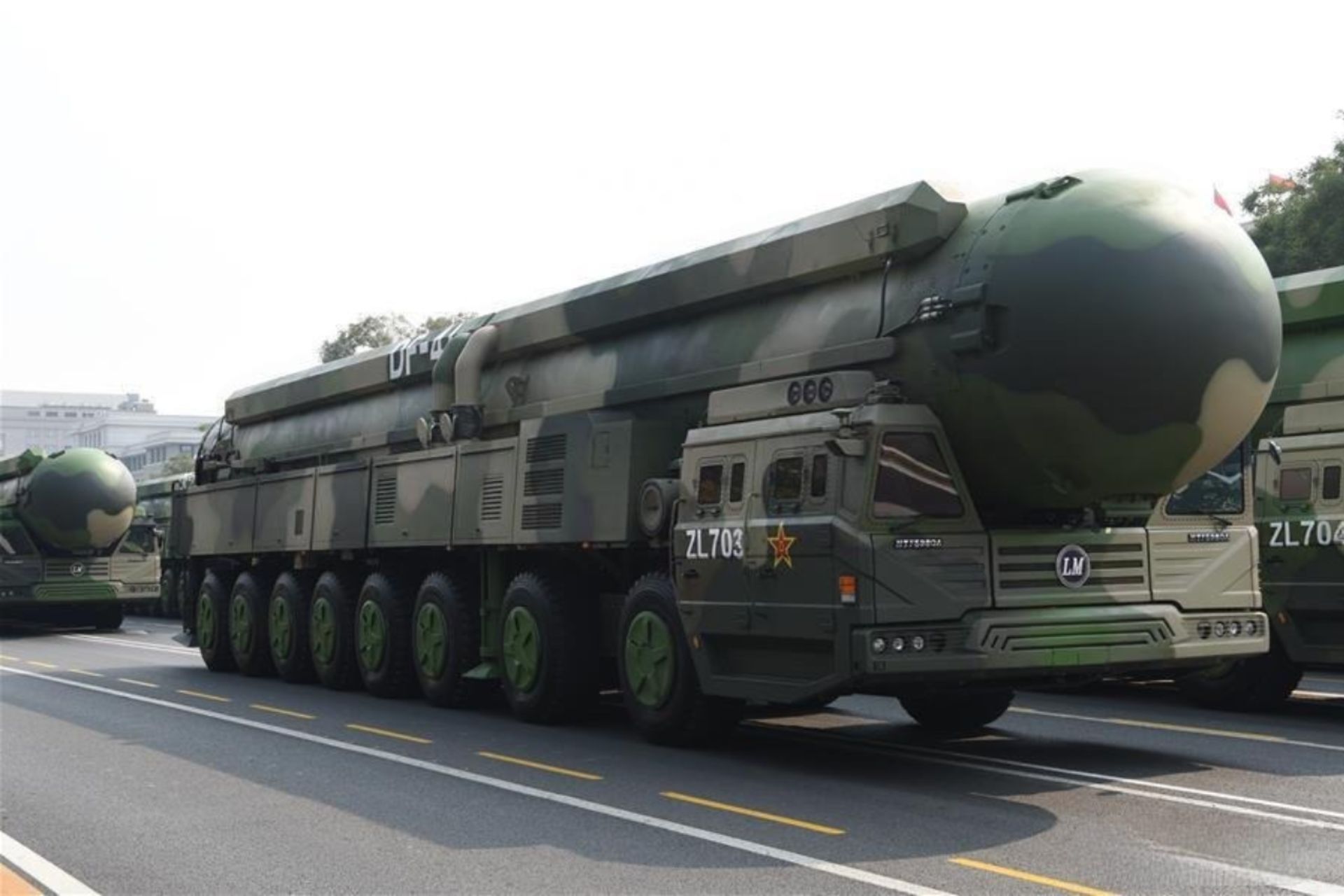Breaking News
US Intelligence Warns of China’s Deployment of New Nuclear Units.
The growing power of China's nuclear capabilities continues to attract the attention of major powers, particularly the United States. According to a recent report from the U.S. Defense Intelligence Agency, China is engaged in the most rapid and ambitious modernization of its nuclear arsenal in the country’s history. Motivated by a desire to strategically compete with the United States, Beijing has invested heavily in the development of new nuclear weapons, deploying a range of advanced technologies that significantly strengthen its position on the global stage.

The Chinese DF-41 solid-fuel intercontinental ballistic missile (Picture source: Chinese MoD)
One of the most notable developments is the rapid expansion of China’s nuclear warhead stockpile, which now exceeds 500 warheads. U.S. estimates suggest that this number could reach 1,000 warheads by 2030, a growth driven largely by the expansion of its intercontinental ballistic missile (ICBM) inventory, such as the DF-31 and DF-41, capable of reaching targets on U.S. soil. The DF-41, tested outside of China’s borders for the first time in 40 years, represents a significant technological advancement, equipped with MIRV (multiple independently targetable reentry vehicles) capabilities, allowing it to strike several targets simultaneously from a single launch.
On land, China has developed an extensive network of underground silos for its ICBMs. The U.S. report reveals the construction of a vast complex of 120 silos in the Gansu province, intended to house ICBMs like the DF-31 and DF-41, marking the largest expansion of China’s land-based nuclear capabilities in history. Additional brigades equipped with the DF-26, an intermediate-range ballistic missile (IRBM) capable of both nuclear and conventional strikes, have been established. The DF-26 offers enhanced precision, with a circular error probability of less than 100 meters, allowing China to diversify its strategic strike options while reinforcing its defensive posture against the United States and its allies.
The DF-26 mobile launcher also plays a crucial role in this military buildup. Successfully deployed in 2019, this system can conduct precision strikes on both land and naval targets, with a maximum range of 5,000 kilometers. This long-range strike capability, combined with the mobility of the units, provides significant strategic flexibility to the People's Liberation Army (PLA), enhancing its nuclear deterrence and defense network.

On September 25, 2024, the People's Liberation Army Rocket Force successfully launched an intercontinental ballistic missile carrying a simulated training warhead into the designated area of the Pacific Ocean (Picture source: Chinese MoD)
At sea, China continues to expand its nuclear capabilities. Two new Type 094 JIN-class nuclear submarines have entered service, bringing the total number of these submarines capable of high-seas patrols to six. These submarines are equipped with the JL-3 submarine-launched ballistic missile (SLBM), an upgraded version of its predecessor, the JL-2, offering greater range and the ability to strike U.S. targets from protected areas, such as the South China Sea. The growth of this submarine force allows China to maintain continuous deterrence capabilities with regular patrols in international waters.
In parallel, Beijing has developed a new aerial component of its nuclear triad with the H-6N strategic bomber, capable of in-flight refueling and carrying an air-launched ballistic missile. This capability was demonstrated during the 2019 national parade, marking a shift in the country’s aerial military strategy. The H-6N, as a key element of China's aerial nuclear strike force, provides Beijing with additional flexibility for nuclear operations.
China’s nuclear arsenal is not limited to the number of warheads or delivery systems. The country is also exploring the development of low-yield nuclear warheads, offering more proportionate response options, particularly in the context of regional conflicts or limited preemptive strikes. This diversification of nuclear capabilities allows China to address a wide range of military scenarios while increasing the complexity of strategic calculations for its adversaries.


























